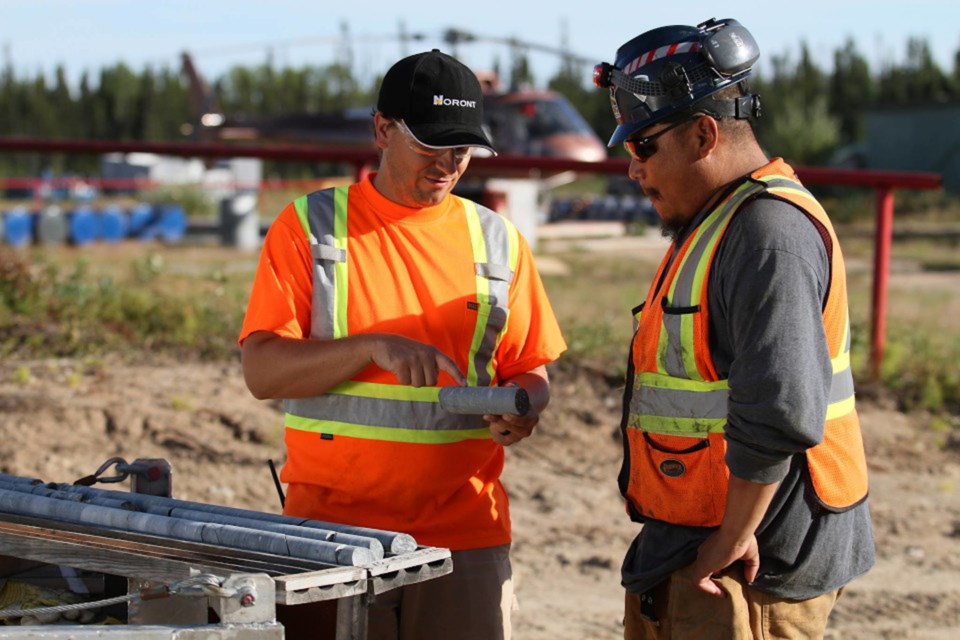For generations, Indigenous people have been bystanders to natural resource development on their traditional lands.
The dynamic has changed. Court-enforced land and treaty rights put Indigenous people at the centre of a mineral resources exploration boom in Canada. First Nations can make or break a project.
There’s a sense of urgency by government and industry today to extract and send to market critical minerals such as nickel, cobalt and lithium, which are used for electric vehicle batteries, green energy and defence applications, and the high-tech sectors.
“The world is needing these critical minerals, and they are in our backyards,” said JP Gladu, a nationally known Indigenous consultant and strategist as principal of Mokwateh.
To restore trust with Indigenous people, the onus is placed on the resource industry to engage with First Nation communities, a dialogue that should have happened a long time ago, he said.
Gladu and entrepreneur Jason Thompson, both friends and Indigenous business trailblazers from northwestern Ontario, joined moderator Ken Coates in a Nov. 23 Macdonald-Laurier Institute webinar on Indigenous Peoples and Critical Minerals.
Both offered insight on how critical mineral development projects might be accelerated in Canada from a First Nations perspective.
Gladu, who serves and has served on many corporate boards for mining and energy companies, including Suncor, calls the change in industry’s attitude over the last five years in working with First Nations “remarkable.”
Where once Indigenous people existed on the periphery of development — with no jobs to be had, no positive community spinoffs, and often damaging environmental legacies left behind — today, there’s talk of partnership, equity ownership and opportunities to participate.
Thompson, the owner of Superior Strategies, a project management firm, agreed.
“We’re seeing a lot more social responsibility from companies. It’s not just words on a website.”
Seizing the life-changing opportunities ahead fills Thompson with hope and optimism that First Nations communities can be transformed from places of poverty to centres of prosperity.
“We’re not anti-development; we’re anti-exclusion,” said Thompson.
“We want to be a part of the economy,” he said. “We want to be part of prosperity.”
Want more business news from the North? Subscribe to our newsletter.
But the rush to extract critical minerals can be overwhelming for some communities that don’t have the technical understanding and ability to fully participate.
Often, the main priorities for Indigenous leaders are dealing with drug and mental health problems in their communities, social challenges that overrule economic development.
Instead of accusing First Nations of foot-dragging, Thompson said industry must have the patience to understand that the learning curve will take time.
“We’ve been excluded for a long time.”
Each community has its own values and viewpoints, and that must be respected, he said.
If there’s transparency in the engagement process, many of these projects will move ahead at a faster pace to where communities will be backing the permitting process instead of protesting against it, he added.
Gladu calls Canada’s engagement with Indigenous people this country’s “super power.”
“Economic reconciliation is our competitive edge.”
Unlocking Indigenous knowledge and tapping into that workforce can help de-risk projects.
But industry can’t take a disingenuous approach to engaging communities as simply a required box-checking exercise, said Gladu.
“We’ll show you the back door as soon as you came in the front door.”
Thompson suggested communities should take the initiative to set the ground rules for engagement, rather than allow industry and government to dictate the development path forward. That would be positive for all and would expedite projects.
Communities also need to develop the capacity and the financial resources to hire the experts and trusted advisors, he said.
“We have to be at the table…voicing those concerns.”
It spurred Thompson to start Warrior Engineering in Thunder Bay, staffed by an Indigenous workforce that incorporates traditional knowledge with Western science into its work. It follows the Indigenous principles of examining the environmental impact of a development on the land for seven generations.
Like many First Nations, Thompson wants to see projects progress so long as they respect Mother Earth and Indigenous traditional values.
If First Nations had greater access to geological maps for their traditional territory, Thompson said it might help communities better understand the value of the resources. That would shift the paradigm of development on the land. It would also bring hope to Indigenous youth who are often casualties in Canada’s drug epidemic.
Moderator Ken Coates, a senior fellow in the institute, finds it’s the resource economy, in the remote regions of Canada, where the reconciliation is really taking place. He said he wouldn’t be surprised if half the new mines developed over the next 50 years are co-owned by Indigenous people.
Both Gladu and Thompson agreed, adding it’s only a matter of time before First Nations start making the mineral discoveries themselves. But to move them forward, access to capital through programs like the new federal Loan Guarantee Program and provincial Indigenous agencies will be key.




